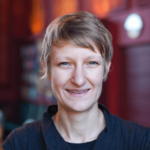
Automated Classification of Osteoarthritis with Textural Analysis of Magnetic Resonance Images
Researchers: Joshua Kaggie, Jamie MacKay, Carola-Bibiane Schönlieb, Robert Tovey
The aim of this project was to combine the well established field of textural analysis with modern machine learning techniques to give automated solution to problems within the specific area of diagnosis of Osteoarthritis (OA). This application was chosen partly because of the importance of OA, it is the single most common cause of disability in the UK (Murray et al, 2013), and because there is a lot of heuristic expectation from medical specialists that textural features carry strong indicators of progression in this disease. The problem that we focused on was that of automated classification of whether a particular patient’s condition will deteriorate significantly over a given time period. This in itself is important because it would allow medical practitioners to more reliably distribute preventative treatments in an efficient and precise manner. Success in this area would also suggest potential to automate a continuous scale of diagnosis for OA. This is important because it would allow accurate tracking of disease progression over the course of a treatment. Presently the most common disease scoring systems are very coarse and insensitive to small changes in disease state and so improvements in this field would allow for much more precise measurement of the effects of particular treatments. The main result of this project was a new method capable of predicting OA progression over a given time period with a sensitivity of 86%, specificity of 64% and accuracy 74%. We felt that these are very competitive scores in this field, especially for such a short project, and in particular the promise of these results has led us to start on a more large scale study which should take these methods even further. The results of this study are to be presented in the next ISMRM conference and in a paper to be published shortly.
